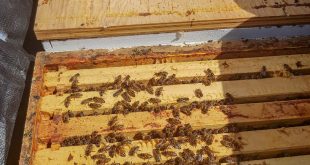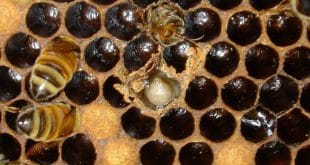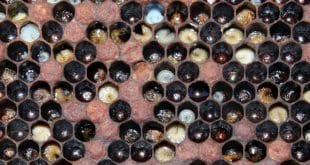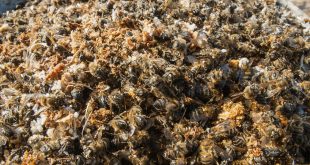Beekeepers, it's time to tackle Nosema disease head-on! 🐝🔬 Our comprehensive guide explores the ins and outs of Nosema treatment, offering insights into natural and commercial solutions. From Fumagillin to Thymol, discover how to protect your bees from this pervasive threat. Dive into our article for the best strategies to keep your hives thriving. 🌿🍯 #BeeHealth #NosemaTreatment #SustainableBeekeeping
Read More »Terramycin Powder for Honeybees – Control Foulbrood Disease
🐝 Beekeepers, are you prepared to defend your hives against American Foulbrood? This article introduces Terramycin powder, a powerful ally in the fight against this devastating bacterial disease. Learn how to use this antibiotic effectively to protect your bee larvae from infection and keep your colonies strong. With proper application and hive management, you can prevent the spread and ensure the longevity of your hives. Dive into our guide for all the details on using Terramycin responsibly. 🍯🔬
Read More »Sacbrood Disease Treatment and Management for Honey Bees
🐝 Beekeepers Alert! Discover how to manage and treat Sacbrood disease, a common viral threat to our honey bee larvae. This article dives into the symptoms, diagnosis, and effective management strategies to keep your colonies thriving. No cure doesn't mean no control! Learn about the importance of hive hygiene, requeening, and apiary management to safeguard your bees against this disease. Stay vigilant and proactive in protecting the future of your hives. #Beekeeping #SacbroodDisease #BeeHealth #ApiaryManagement #BeehiveHygiene #SaveTheBees 🐝✨
Read More »European Foulbrood Treatment and Management
Beekeepers, take note! European Foulbrood (EFB) is a serious threat to your hives, but with the right knowledge, you can manage and treat it effectively. Learn the symptoms, like patchy brood patterns and an ammonia-like smell, and get ahead with proper diagnosis and treatment options, including antibiotics like Terramycin. Prevention is key, so stay vigilant with hive inspections and management practices. Don't let EFB reduce your honey yield and quality. Dive into our comprehensive guide for all you need to know about EFB management. #Beekeeping #EuropeanFoulbrood #BeeHealth
Read More »Acute Bee Paralysis Virus (ABPV) – Symptoms and Diagnosis
Beekeepers, beware! Acute Bee Paralysis Virus (ABPV) is a silent threat that can devastate your hives. With symptoms ranging from bloated abdomens to trembling wings, ABPV can lead to sudden colony collapse. Stay informed about this lethal virus, its transmission, and management strategies. Protect your bees from this global menace. #BeeHealth #ABPV #BeekeepingChallenges
Read More » BeeKeepClub Resources and Guides for Beekeepers
BeeKeepClub Resources and Guides for Beekeepers




